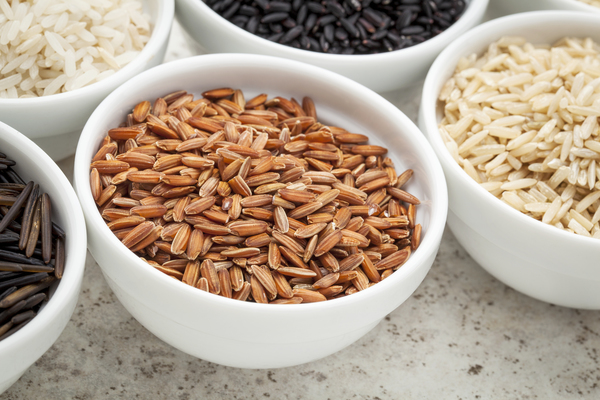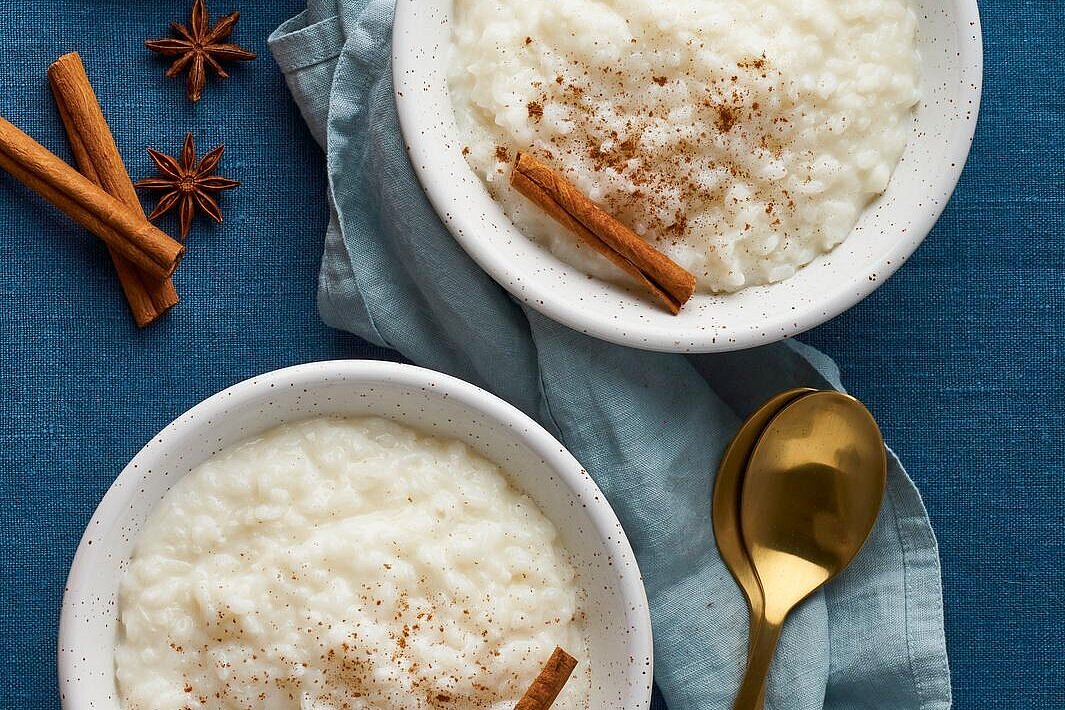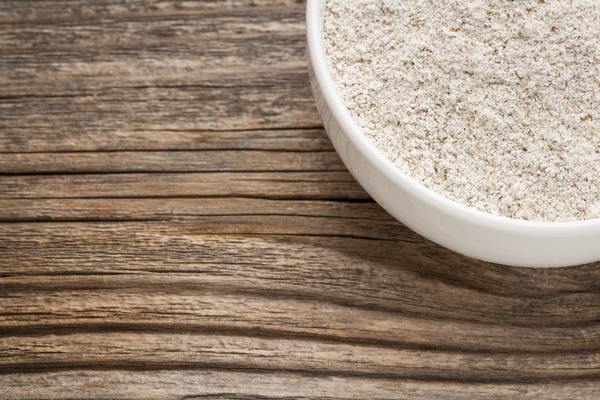Brown rice

What is brown rice?
Brown rice is also known as whole grain rice or unpolished brown rice. It arrives in the supermarket neither washed nor polished. As a result, its protein and fat content is higher than that of white rice and the silver skin, which is rich in nutrients and fiber, is preserved. Brown rice contains more vitamins, minerals and unsaturated fatty acids than white rice. It has a nuttier taste and a firmer consistency. It is available as round grain rice and long grain rice.
What are the benefits of brown rice for dogs?
Brown rice can help dogs with stomach problems. Because rice is easy to digest and contains nutrients, it can help soothe your dog's gut and aid their recovery. You can mix some cooked rice with cooked lean meat such as chicken or lean ground beef in a 50:50 ratio to give your dog a chance to recover. This meal replacement can help relieve gastrointestinal discomfort or diarrhea.
Brown rice can also boost your dog's overall health. It provides him with complex carbohydrates that give him energy and fiber that regulates his digestion. It also contains important vitamins such as B1, B3, B6 and E as well as minerals such as magnesium, iron, zinc and potassium. These nutrients can support your dog's immune system, skin, coat, nerves and muscles.
What are the disadvantages of brown rice for dogs?
Brown rice is healthy, but should not be your dog's main food source. Although it contains more nutrients than white rice, it cannot meet all your dog's needs. Above all, your dog needs high-quality animal protein, which rice cannot provide. In addition, too much rice can lead to obesity, bloating or nutritional deficiencies if it displaces other important ingredients.
Brown rice can also be intolerable for some dogs. It contains phytic acid, which can inhibit the absorption of minerals, and lectins, which can trigger allergic reactions. If your dog is sensitive to grains or has a grain allergy, you should not feed it rice. Rice is also not recommended for dogs with diabetes or kidney problems, as it can increase blood sugar and phosphate levels.
How do I prepare brown rice for my dog?
To prepare brown or white rice for your dog, you will need one cup of uncooked rice and four cups of water. Before you do anything else, you should remove any excess starch from the uncooked rice. You can do this by placing the rice in a sieve with holes that prevent the rice from falling through and running it under cold water until the water runs clear. Once the rice has been cleaned, place it in a pan with the water and bring to the boil. Then reduce the heat and leave the rice to simmer with the lid on for about 45 minutes until it is soft. Make sure that the rice does not cook for too long, otherwise it will become mushy.
When the rice is cooked, you can leave it to cool and serve it to your dog either on its own or with some meat or vegetables. You can also store the cooked rice in the fridge for up to three days or in the freezer for up to three months.
Brown rice, also known as whole grain rice, is a healthy addition to a dog's diet, especially if they have stomach problems. It is easy to digest, contains complex carbohydrates, fiber and nutrients that can regulate digestion and promote health. However, brown rice should not be a dog's main food source and it may not be suitable for dogs with grain intolerances, diabetes or kidney problems. Brown rice should be well cooked and served in moderation.
Properties 7
Are you looking for other ingredients with a specific property?
Just click on them to find more.
If you notice any signs of hypersensitivity or poisoning in your dog, you should see your vet immediately. We are not a substitute for a vet, but we try to be as accurate as possible. Every dog reacts differently and we recommend you get a second opinion or consult your vet if in doubt.
Stay healthy and take good care of your four-legged friend!😊
Similar to Brown rice
Brown rice is the unhulled form of rice that still contains the outer husk, the so-called silver skin. This husk is rich in fiber, vitamins, minerals and antioxidants, which are lost in hulled rice....
Rice is a grain obtained from the seeds of the rice plant. There are many different types of rice, which differ in shape, color, taste and nutritional value. The best known are white rice, brown...
Rice pudding is a rice dish that is particularly common in Europe and Asia. There are many different recipes for rice pudding, but the basic ingredients are always round grain rice, milk and sugar....
Rice flour has several benefits for dogs that you should be aware of. For one, it's easily digestible and can help regulate digestion in case of gastrointestinal problems or diarrhea. Secondly, it...



